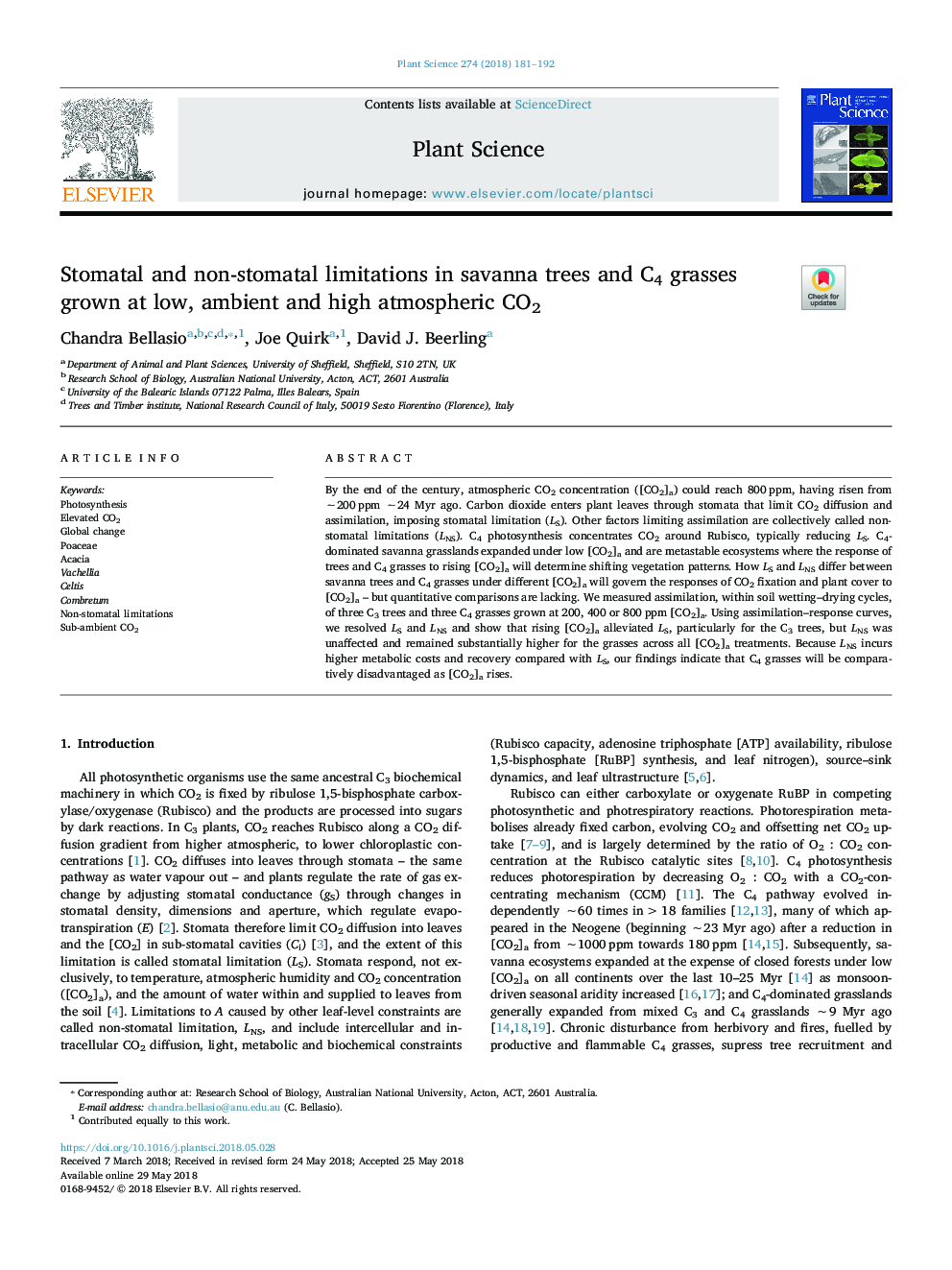| Article ID | Journal | Published Year | Pages | File Type |
|---|---|---|---|---|
| 8356267 | Plant Science | 2018 | 12 Pages |
Abstract
By the end of the century, atmospheric CO2 concentration ([CO2]a) could reach 800â¯ppm, having risen from â¼200â¯ppm â¼24 Myr ago. Carbon dioxide enters plant leaves through stomata that limit CO2 diffusion and assimilation, imposing stomatal limitation (LS). Other factors limiting assimilation are collectively called non-stomatal limitations (LNS). C4 photosynthesis concentrates CO2 around Rubisco, typically reducing LS. C4-dominated savanna grasslands expanded under low [CO2]a and are metastable ecosystems where the response of trees and C4 grasses to rising [CO2]a will determine shifting vegetation patterns. How LS and LNS differ between savanna trees and C4 grasses under different [CO2]a will govern the responses of CO2 fixation and plant cover to [CO2]a - but quantitative comparisons are lacking. We measured assimilation, within soil wetting-drying cycles, of three C3 trees and three C4 grasses grown at 200, 400 or 800â¯ppm [CO2]a. Using assimilation-response curves, we resolved LS and LNS and show that rising [CO2]a alleviated LS, particularly for the C3 trees, but LNS was unaffected and remained substantially higher for the grasses across all [CO2]a treatments. Because LNS incurs higher metabolic costs and recovery compared with LS, our findings indicate that C4 grasses will be comparatively disadvantaged as [CO2]a rises.
Related Topics
Life Sciences
Agricultural and Biological Sciences
Plant Science
Authors
Chandra Bellasio, Joe Quirk, David J. Beerling,
